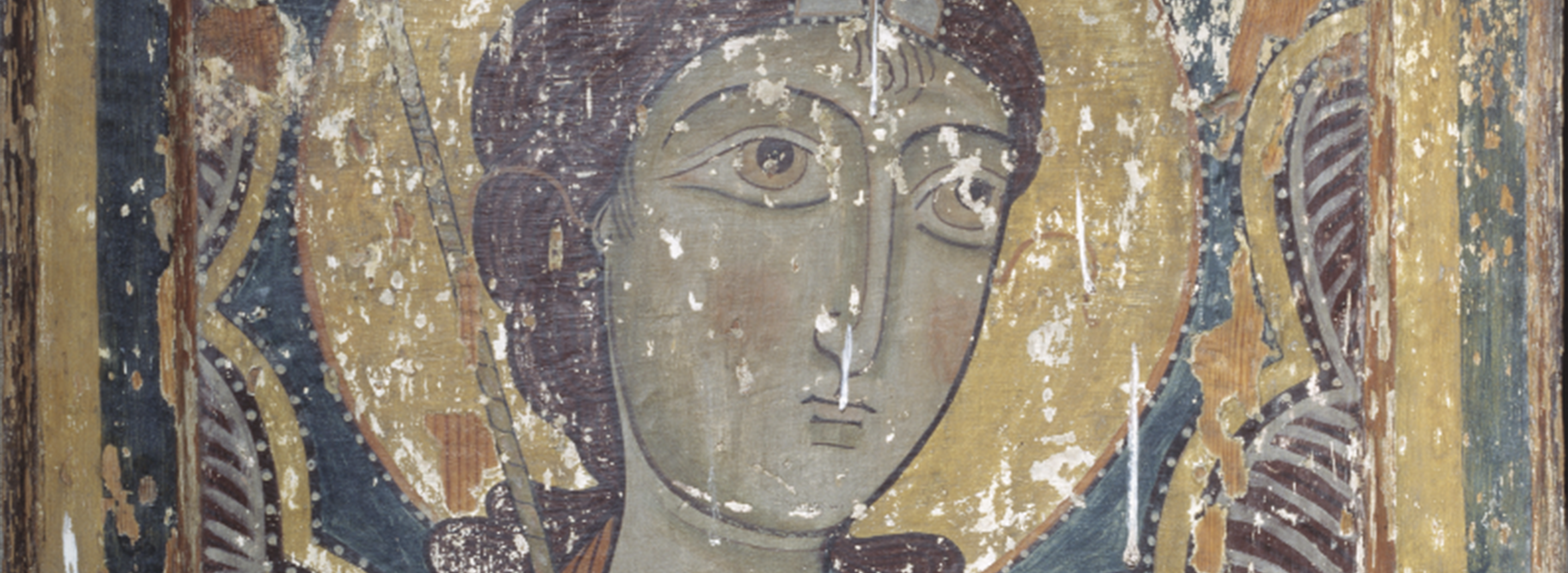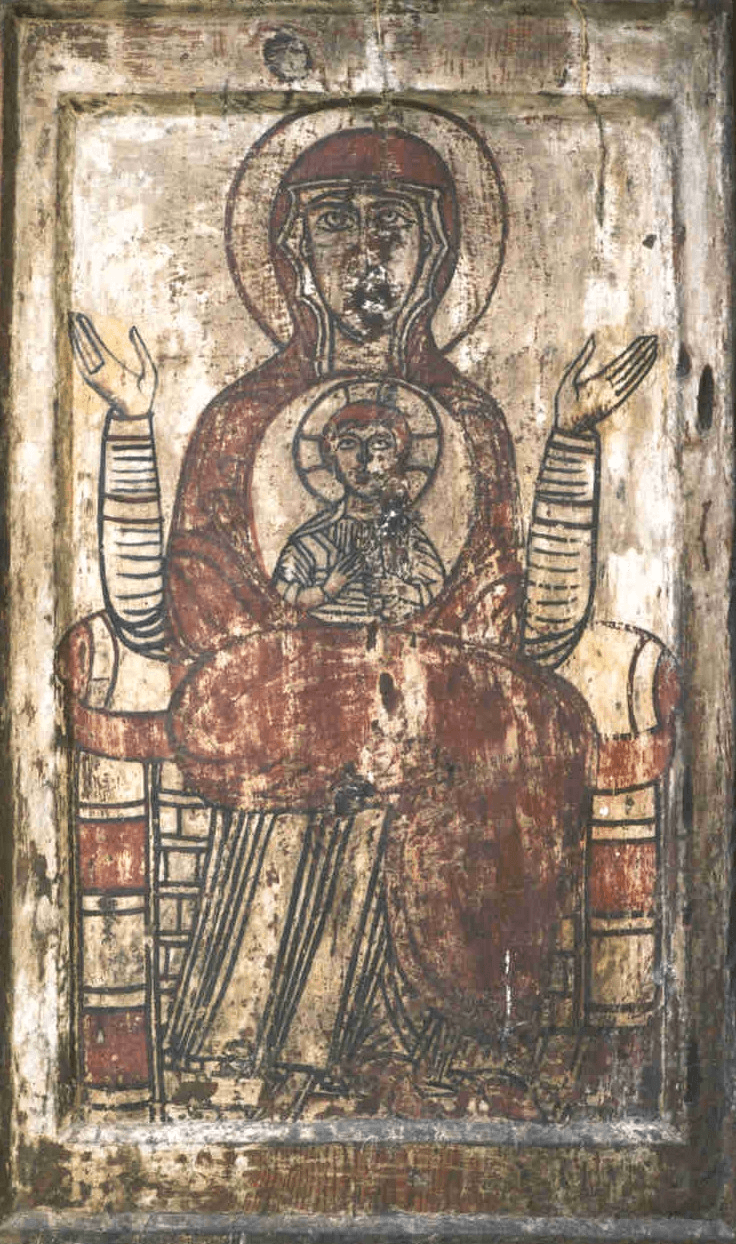
Feel free to add tags, names, dates or anything you are looking for


In medieval Georgia a number of local icon-painting styles, were developed, among which must be singled out the so-called Svaneti “school of icon-painting”. Although there is no documented evidence about the local workshops, the extant material allows us to attribute an impressive number of painted icons to Svaneti, a north-western highland region of Georgia. Numerous icons preserved in the Sveneti Museum and local churches demonstrate stylistic and technical features that differ from the Pro-Byzantine stream of medieval Georgian religious painting. The icons produced in the workshops of Svaneti mainly date back to the 13th-15th cc. Most of them are no longer in their original location, but their subject, size and shape suggest that they were created for various purposes: for chancel barriers, burial places, as well as for private devotion.
The Svaneti icon-painting “school” elaborated a specific artistic language, which is characterized by clear and somewhat simplified forms, local colors and flattened, static figures. The structure of the devotional images belonging to local workshops, aimed to represent Christian dogmas and theological concepts in a more understandable manner. Among the subjects of the Svaneti icons prevail individual images of Christ, the Virgin and the Saints. These icons are also characterized by particular technical features - they are usually painted directly on the wooden panel devoid of a priming. In some instances, the priming is so thin that the pattern of wood grain is visible through painting layer.
Christ in Majesty is depicted on the 13th century icon from St. Barbara Church in the village of Khe. The enthroned figure of the Savior, with an enlarged head and exaggerated blessing right hand, is encircled with a red mandorla. The expressive linear treatment of flattened forms, and the restricted palette of the icon, which is composed of red, blue and white colors, represent the main aesthetic tendencies that are deeply rooted in local artistic traditions.

Christ in Glory, 13th c., St. Barbara Church, Khe, Upper Svaneti
The Virgin and Child icon from Ipkhi strikes with its coloristic system – an intense red background creates a particular transcendent “space” for the depicted characters. The fiery red alludes to the purifying divine fire and adds a specific spirituality to the icon. The distinctive facial features of the Virgin and Child – with low foreheads, elongated eyes, thin long noses lend the images unique individual character.

The Virgin and Child, 13th c., Museum of Svaneti, Mestia, Upper Svaneti

The Virgin and Child, detail
The monumental icon of the Mother of God, known as the Virgin Vlachernitissa, is named after Vlacherna, one of the main Marian shrines of Constantinople. The imposing seated figure of the Virgin with Christ Emmanuel portrayed within the medallion shown against her breast, is an allusion to Isaiah's prophesy of the Nativity. The large size of the icon and its monumental figures suggest that this panel was a title icon of one of the local churches

The Virgin Vlachernitissa, 13th -14th cc., St. George Church, Lakhushti, Upper Svaneti
The Archangels are often depicted on Svaneti icons. An icon with a half-length figure of the Archangel from the church of the Archangels of Iprari is marked by a “naïve spirituality”. The Archangel’s huge, wide-open eyes attract the viewers’ attention, leading them to contemplation and prayer.

The Archangel, 13th-14th cc., the Archangels’ Church, Iprari, Upper Svaneti
The large icon from Ushguli, with the symbolic compositions known as the Council of the Archangel and the Last Supper on the upper frame represents an unusual combination of subjects. The monumental, somewhat severe Archangels clad in Byzantine imperial dress recall mural images.

The Council of the Archamgels, 13th c., Ushguli, Upper Svaneti

The Council of the Archamgels, 13th c., Ushguli, detail
The icons associated with Svaneti demonstrate certain features, which could be linked to local visual traditions and echo artistic tendencies revealed in the monumental painting of this region. Laconic, somewhat epic visual language attracts the beholders and reveals the specific perception of the “divine realm”.
Georgia’s social and political situation stimulated particular stylistic development of art. The weakening of the ties with central regions, which once provided strong creative impulses led to the revival of traditions deeply rooted in people’s consciousness. It seems likely that the earlier artistic forms were recalled during this period.
The icons of this artistic tradition, created by painters with various professional backgrounds, are distinctive in character. What they have in common is an original compositional structure based on specific linear and coloristic systems, which serve to create sacred images that are accessible to the people. A hallmark of this system is the simplified expressive style, characterized by a unique, albeit modest, emotionality.
The icons of painters from Svaneti demonstrate a centuries-long tradition of the creation of sacred images corresponding to the local spiritual and aesthetic requirements.